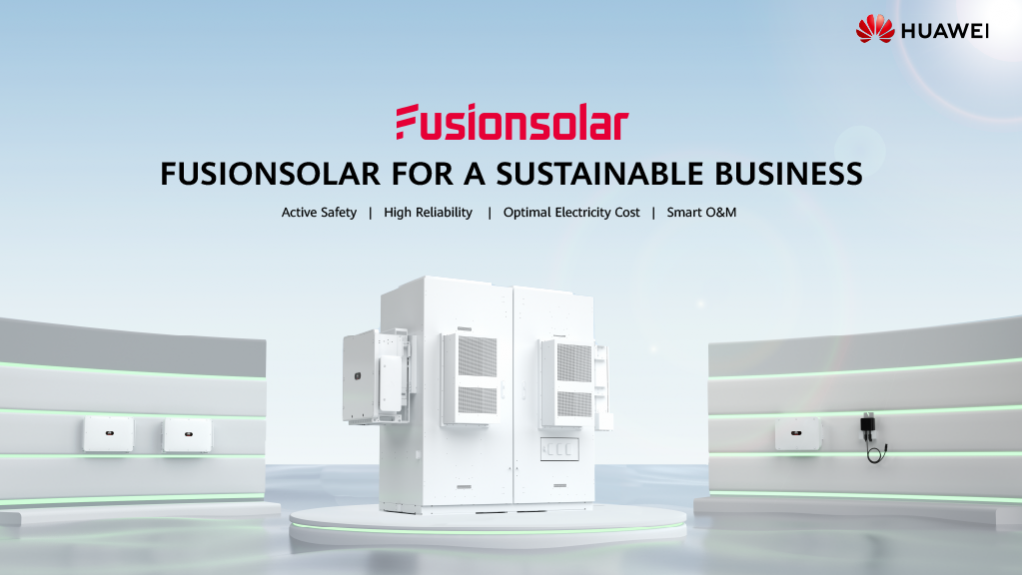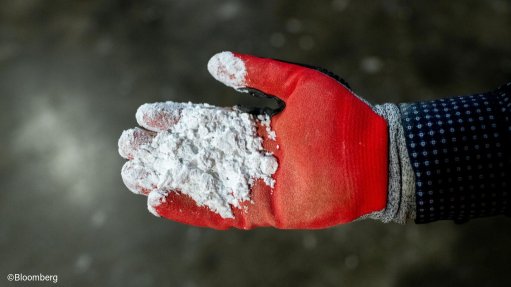How Huawei safety advancements bring protection to your C&I investment
African leaders have called for measures and policies that enable a transition from carbon intensive, to low carbon technologies. This will not only safeguard people and the environment, but will ensure that economies are resilient and continue to grow. Such a transition requires greener forms of electricity generation, such as solar and wind power.
Businesses want to switch to systems that incorporate renewables; however, they should be aware of all safety risks associated with greener solutions and choose a supplier that prioritises their safety.
“Huawei deploys smart features within its commercial photovoltaic (PV) energy storage solutions (ESS) to mitigate safety risks where fault points can occur,” says Huawei Digital Power South Africa C&I Solutions Architect Muzakkir Sonday. “The systems are built to provide comprehensive system-level protection.”
Huawei’s high capacity battery ESS, called the Model LUNA2000 200 kWh-2H1, is ideal for large industrial uses in sectors like aviation, banking, higher education and agriculture. It is suitable for creating low carbon campuses because it can store energy from renewable sources with a modular capacity of up to 4 000 kWh. It expertly meets grid-tied and off-grid energy needs.
Safety and stability are paramount to the design of the LUNA2000 200 KWH-2H1. Huawei achieves high standards by combining digital and power electronics technologies, its expertise in new materials[l1] [MM2] and active monitoring components into this smart BESS.
At the core of Huawei’s one-stop commercial and industrial (C&I) solution are technologies that guarantee safety, optimal energy costs, reliability and seamless operations and maintenance (O&M) capabilities.
Safety is the Foundation of Business Development
Huawei Fusionsolar solutions are equipped with multiple internationally-rated, class leading proactive safety features, focused on ensuring your peace of mind. The BESS has active safety measures in the form of a battery management system (BMS) which monitors the health and performance of each battery cell.
“It is a first-in-class system that prevents overcharging, overheating and it is fitted with integrated fire suppression tools that provide an extra layer of protection in case of thermal runaway,” says Sonday.
Its structural design includes components that are made with redundancy in mind, so a single component failure does not lead to a system failure. The system is housed in a weather-resilient IP55-rated enclosure that ensures durability and protection from environmental risks.
Smart string-level disconnection features ensure device safety. Thanks to its intelligent systems, the Smart string PV inverters can achieve rapid shutdown in 15 milliseconds while real-time monitoring can quickly cut off faulty circuits.
Features like these in the newly launched 150K series C&I Inverters enhance both personal and property safety.
Inverter failure is the most common vulnerability of a PV system. Huawei FusionSolar 150K series C&I Inverters have industry leading module-level monitoring with a proven reliable design. They only use top-quality components, which undergo rigorous, extreme situational testing and are meticulously inspected.
Competitor systems can experience problems like cable damage or damaged module terminals during grid connection and without insulation detection systems, inverter faults like this can result in loss of revenue.
“Huawei solutions integrate the industry’s first PV ground-fault protection to prevent inverter failure and fire risks,” says Sonday. “A software algorithm detects current and disconnects the AC side within 15 milliseconds and Huawei developed [solutions][SD3] optimise the system’s ability to withstand a short-circuit.”
Smart temperature detection further ensures inverter safety because when terminals are not connected properly, faults can occur and lead to overheating. Huawei’s solution uses NTC temperature detection points on terminals to track dangerous temperatures in real time.
“When a problem is detected, the inverter generates an alarm and shuts down to prevent the risk,” says Sonday.
Huawei has also pioneered smart string-level disconnection and module-level rapid shutdown to respond to DC short circuit issues which can cause fire and other safety risks to property and firefighters or O&M personnel.
An active fire suppression module within the BESS automatically senses problems in extreme scenarios and quickly extinguishes fires. It is designed to prevent harm in hazardous situations like explosions.
“Traditional systems have no directional explosion discharge designed into the units, placing people at risk of flames and high-pressure gases,” warns Sonday. “Huawei’s BESS is fitted with pressure release windows on the top so no person will be harmed within a one metre perimeter in such unlikely extreme scenarios.”
With Huawei systems, property safety is ensured thanks to industry-leading arc-fault circuit interrupters (AFCIs) that have a wider span and faster function than conventional AFCIs. Traditional AFCIs can only detect a fault up to 80 m and with a current up to 16 A, which is insufficient for larger high-power modules found on commercial sites.
“Our industry leading 450 m detection range and 48 A detection current combined with a 0.5 second shut down speed ensures safety for emergency workers as well as your property should risks arise,” says Sonday.
A System that Optimises Electricity Costs
The cost of grid supplied energy in Africa is rising, and a paper in the journal Nature Communications shows that the cost of “solar-powered mini-grids and standalone systems drastically lower[s] the cost of electrifying remote and high-cost areas”.
It is no wonder that enterprises prefer these solutions to optimise their electricity costs. However, this can mean costly up-front investments to switch to such solutions, so businesses need to get the most out of their expenditure.
An industry leading maximum power point tracking algorithm and module-level optimisation within Huawei systems, provides customers with up to 30% more power yield when compared to traditional PV solutions.
“PV modules usually suffer performance challenges caused by shading, which reduces the overall energy yield. Our on-module optimisation means you do not need to lose precious space for solar panels to shade,” advises Sonday.
Huawei optimisers make sure that business can generate the most power possible despite differing roof configurations. Pack level optimisation with Huawei systems ensures that as a battery degrades over time, it will not affect the performance of other batteries. This level of optimisation results in 5% more usable power for businesses.
Reliability is of Utmost Importance
The Model LUNA2000 200 kWh-2H1 BESS is designed and tested to operate in harsh environments. From high temperature power stations in the United Arab Emirates to -30 °C conditions in China’s Heilongjiang province, Huawei’s high protection designs are made to improve operational reliability.
Rigorous testing has earned this solution strict certifications, making companies resilient in the face of natural disasters that could occur.
Sonday stresses that, “Huawei’s reliability has been certified by independent companies giving the 2.2 GW project in Qinghai, China, a 99.999% availability rating. With durable modules and smart O& M, Huawei enables the world’s largest power plants to run smoothly and efficiently.”
Optimisations that Promote Industry Leading O&M Capabilities
Traditionally, large-scale C&I systems like these require manual site visits, two to three times a quarter, with each inspection taking an average of three hours to detect a fault. This makes O&M a costly and time-consuming exercise.
Huawei’s BESS offering is a one-stop solution when it comes to O&M thanks to module level monitoring provided by the inverter and optimiser. Added to this automatic state of charge (SOC) calibration within the ESS removes the need for on-site visits to detect faults and manual SOC adjustments after battery replacements.
These features lower O&M costs for enterprises by reducing call out times to about once a quarter. Since fault detection is automated, maintenance procedures are more efficient. Online Smart I-V curve diagnosis auto generates diagnosis reports within 10 minutes and 100% of strings are scanned quickly as opposed to manual diagnosis which only takes a 10% sample scan and could require manual data analysis and report writing.
“Intelligent systems across this solution reduce O&M costs by 50% and inspections are 50% more efficient thanks to Huawei’s smart features,” says Sonday.
A Proud Commitment to Safety and Reliability
Safety for people, property and equipment is of utmost importance to Huawei’s C&I customers. Rigorous scrutiny of every single component within the Model LUNA2000 200 kWh-2H1 as well as external components of the system mean clients can rest assured that their energy investments are secure.
“We do not just power businesses and enable them to scale their energy solution for the future, we make sure businesses are protected should worst-case scenarios ever arise. Our systems are geared to save costs while providing reliable service in the harshest conditions,” says Sonday.
Follow Huawei Digital Power Sub Saharan Africa on LinkedIn to stay up to date on exciting project news, product launches and events throughout Africa.
Get More information here - https://www.linkedin.com/company/huawei-digital-power-subsaharan-africa
Article Enquiry
Email Article
Save Article
Feedback
To advertise email advertising@creamermedia.co.za or click here
Press Office
Announcements
What's On
Subscribe to improve your user experience...
Option 1 (equivalent of R125 a month):
Receive a weekly copy of Creamer Media's Engineering News & Mining Weekly magazine
(print copy for those in South Africa and e-magazine for those outside of South Africa)
Receive daily email newsletters
Access to full search results
Access archive of magazine back copies
Access to Projects in Progress
Access to ONE Research Report of your choice in PDF format
Option 2 (equivalent of R375 a month):
All benefits from Option 1
PLUS
Access to Creamer Media's Research Channel Africa for ALL Research Reports, in PDF format, on various industrial and mining sectors
including Electricity; Water; Energy Transition; Hydrogen; Roads, Rail and Ports; Coal; Gold; Platinum; Battery Metals; etc.
Already a subscriber?
Forgotten your password?
Receive weekly copy of Creamer Media's Engineering News & Mining Weekly magazine (print copy for those in South Africa and e-magazine for those outside of South Africa)
➕
Recieve daily email newsletters
➕
Access to full search results
➕
Access archive of magazine back copies
➕
Access to Projects in Progress
➕
Access to ONE Research Report of your choice in PDF format
RESEARCH CHANNEL AFRICA
R4500 (equivalent of R375 a month)
SUBSCRIBEAll benefits from Option 1
➕
Access to Creamer Media's Research Channel Africa for ALL Research Reports on various industrial and mining sectors, in PDF format, including on:
Electricity
➕
Water
➕
Energy Transition
➕
Hydrogen
➕
Roads, Rail and Ports
➕
Coal
➕
Gold
➕
Platinum
➕
Battery Metals
➕
etc.
Receive all benefits from Option 1 or Option 2 delivered to numerous people at your company
➕
Multiple User names and Passwords for simultaneous log-ins
➕
Intranet integration access to all in your organisation



















